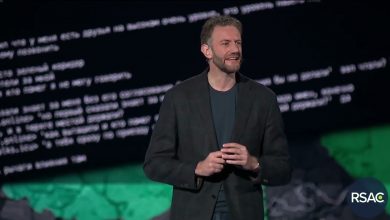Revolutionizing the SOC for the Future Threat Landscape
To succeed now and stay resilient amidst tomorrow’s challenges, it’s time to revolutionize the SOC.
 Could you have imagined today’s SOC five years ago? AI was probably part of it, but nobody foresaw the rise of Generative AI.
Could you have imagined today’s SOC five years ago? AI was probably part of it, but nobody foresaw the rise of Generative AI.
To succeed now and stay resilient amidst tomorrow’s challenges, it’s time to revolutionize the SOC.
Speaking at the RSA Conference Gary Steele, EVP Splunk, discussed building a future-proof strategy for the evolving cyber landscape, combining a vision of possibility while staying grounded in reality.
Speaking with CNBC Steele said to expect more AI-related attacks in 2024.
The Evolution of Cybersecurity SOC in the Era of AI
In today’s digital landscape, the role of Security Operations Centers (SOCs) has become increasingly critical in defending organizations against cyber threats.
With the advent of Artificial Intelligence (AI), cybersecurity SOCs are undergoing a significant evolution to enhance threat detection, response capabilities, and overall security posture.
- Traditional SOC vs. AI-Powered SOC: Traditional SOCs heavily rely on manual analysis and rule-based systems to detect and respond to security incidents. However, AI-powered SOCs leverage machine learning algorithms and predictive analytics to automate threat detection, analyze vast amounts of data, and identify patterns that may indicate potential threats.
- Enhanced Threat Detection: AI technologies such as machine learning and behavioral analytics enable SOCs to detect anomalies and suspicious activities in real-time. By continuously learning from data patterns, AI can identify emerging threats that traditional security tools might miss.
- Rapid Incident Response: AI-driven automation streamlines incident response processes by prioritizing alerts, correlating data from multiple sources, and providing actionable insights to SOC analysts. This accelerates the investigation and remediation of security incidents, reducing the time to detect and respond to threats.
- Predictive Security Intelligence: AI empowers SOCs with predictive capabilities to anticipate potential security breaches based on historical data and threat intelligence. By proactively identifying vulnerabilities and weak points in the network, organizations can preemptively strengthen their defenses against cyber attacks.
- Scalability and Efficiency: AI-driven automation enhances the scalability and efficiency of cybersecurity operations by handling repetitive tasks, reducing false positives, and optimizing resource utilization. This allows SOCs to focus on strategic initiatives and high-priority threats, improving overall security posture.
- Continuous Learning and Adaptation: AI-powered SOCs continuously learn from new data and adapt to evolving threat landscapes. By analyzing historical incidents and security trends, AI algorithms can refine their detection capabilities and stay ahead of emerging cyber threats.
- Collaboration with Human Analysts: While AI plays a crucial role in augmenting cybersecurity defenses, human analysts remain essential for contextualizing insights, making critical decisions, and investigating complex security incidents. The synergy between AI and human expertise enhances the effectiveness of cybersecurity operations.
The evolution of cybersecurity SOCs in the era of AI represents a paradigm shift in how organizations defend against cyber threats. By harnessing the power of artificial intelligence, SOCs can enhance threat detection, response capabilities, and overall security resilience in an increasingly complex and dynamic threat landscape.



